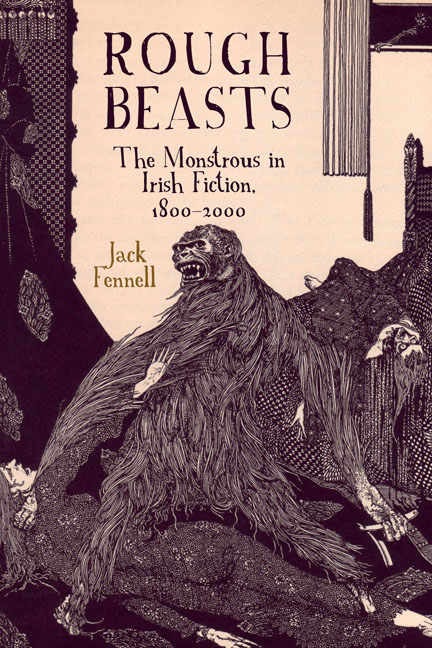Book contents
- Frontmatter
- Contents
- Acknowledgements
- 1 Introduction: In Defence of Fear
- 2 We Dare Not Go A-Hunting: Fairies, Deep Time, and the Irish Weird
- 3 Harbingers of Hunger: Famine, Cannibalism, and Hunger-Demons
- 4 From Lore to Law: Malevolent Magic and Spiritual Warfare
- 5 Ghosts, Narrative, and Noumenal Reality
- 6 Just Sign Here: Faustian Pacts, Demons, and Chaos
- 7 The Undead Generations: Zombies, Vampires, and the Corporeal Undead
- 8 Breeding Breaks Out: Shape-Shifters, Cryptids, and Cunning Animals
- 9 Haunted Spaces and Monstrous Lairs
- 10 Conclusions
- Bibliography
- Index
4 - From Lore to Law: Malevolent Magic and Spiritual Warfare
- Frontmatter
- Contents
- Acknowledgements
- 1 Introduction: In Defence of Fear
- 2 We Dare Not Go A-Hunting: Fairies, Deep Time, and the Irish Weird
- 3 Harbingers of Hunger: Famine, Cannibalism, and Hunger-Demons
- 4 From Lore to Law: Malevolent Magic and Spiritual Warfare
- 5 Ghosts, Narrative, and Noumenal Reality
- 6 Just Sign Here: Faustian Pacts, Demons, and Chaos
- 7 The Undead Generations: Zombies, Vampires, and the Corporeal Undead
- 8 Breeding Breaks Out: Shape-Shifters, Cryptids, and Cunning Animals
- 9 Haunted Spaces and Monstrous Lairs
- 10 Conclusions
- Bibliography
- Index
Summary
In June 1790 a group of fishermen in the vicinity of Castlelyons, Co. Cork, found a severed hand buried in the earth while searching for worms to use as bait. They brought the hand back to town for others to inspect, whereupon one man recognised it as belonging to his recently interred wife. The grave was dug up immediately, and the body was found “not only dismembered, but [with] all the human fat taken out”. The alarm was raised, during which it was discovered that four suspicious strangers, who had rented a house in the town, had run off after news broke of the hand's discovery. Afterwards, the consensus that emerged was that these strangers were not only grave-robbers, but witches and thieves:
It is generally believed, on what authority we will not vouch, [that] the shocking conduct of taking out the fat was for making a candle, which being put into the dead hand, and carried at night to commit a burglary, that while it remains lighting in this manner, no person in the house will wake, therefore a robbery may be committed with safety. (“Dublin June 23”, Freeman's Journal, 26 June 1790)
The talisman mentioned here, a ‘Hand of Glory’, is an apt emblem for the ways in which magic was linked to criminality in the popular imagination. This linkage persisted up to the end of the nineteenth century and beyond: one of the recurring villains of Patrick Bardan’s The Dead-Watchers (1891), the bandit Cahal Roe, lives with his gang in a “hag's cottage” on a moor (35), drains his victims’ blood into a basin for purposes unknown (36–7), and steals corpses from graveyards, using some kind of mesmeric or magical power to enlist the unwilling aid of the bereaved (49–50).
The witch, warlock, or wizard was a transgressor against not just the laws of the community but the laws of nature as well, and these figures constitute a special class in legal history in that they were routinely prosecuted for both. The first person to be convicted of witchcraft in Ireland was Dame Alice Kyteler, who was tried in absentia in 1324 (Seymour 26), but it was not until 1586 that the Irish parliament passed a witchcraft statute of its own (61).
- Type
- Chapter
- Information
- Rough BeastsThe Monstrous in Irish Fiction, 1800–</I>2000, pp. 75 - 98Publisher: Liverpool University PressPrint publication year: 2019



